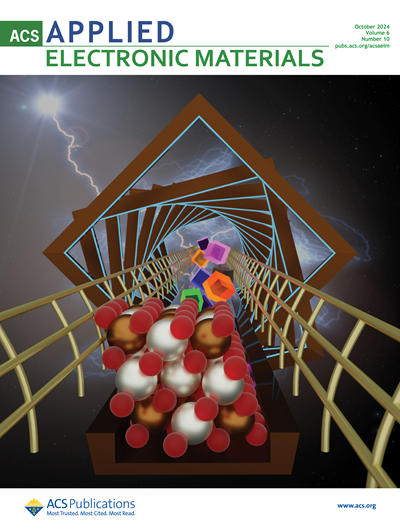Metasomatic interaction of ultramafic mantle xenoliths with their felsic HP–UHT granulite host (Moldanubian Domain, Bohemian Massif in Lower Austria)
IF 4.3
3区 材料科学
Q1 ENGINEERING, ELECTRICAL & ELECTRONIC
引用次数: 0
Abstract
The St. Leonhard granulite massif in Lower Austria, dominantly formed by kyanite-bearing felsic granulite, encloses countless up to 5 cm sized mantle xenoliths of garnet clinopyroxenite and peridotite. The mineralogical, textural and chemical consequences of a mutual metasomatic interaction at the contact between these xenoliths and the host orthopyroxene-bearing felsic granulite are described. Movement of Mg, Al and, especially, Ca from the garnet clinopyroxenite to the granulite and migration of K and Na in the opposite direction, caused the breakdown of clinopyroxene and formation of orthopyroxene–plagioclase symplectite coronae at the expense of the garnet clinopyroxenite xenoliths. Around the peridotite xenoliths, monomineralic orthopyroxene coronae have developed due to the supply of Si from the host granulite. The P–T conditions of this interaction were established to 900–1000 °C and 1.0–1.2 GPa by thermodynamic modelling. The duration of coronae growth was constrained to 13–532 ka based on modelling of Fe–Mg interdiffusion underlying secondary compositional zoning of garnet from the garnet clinopyroxenite xenolith extending to the coronae. The most significant change in the host granulite was caused by the supply of Ca from the garnet clinopyroxenite xenolith, which led to the breakdown of the Al2SiO5 phase – probably kyanite – and stabilization of orthopyroxene. K-feldspar-poor haloes surrounding mantle xenoliths formed due to the depletion of K in the granulite adjacent to the garnet clinopyroxenite. The observed origin of felsic–intermediate orthopyroxene-bearing granulite by transformation of felsic kyanite-bearing granulite through the metasomatic interaction with mantle xenoliths implies that the deep crustal chemical exchange between mantle- and crust-derived lithologies may have an important consequences on composition, thermal structure and geodynamic evolution of orogenic lower crust especially in hot collisional orogens, such as the European Variscides.超基性地幔尖晶石与其长晶质 HP-UHT 花岗岩主岩(下奥地利波希米亚丘 Moldanubian 域)的成岩作用
下奥地利州的圣莱昂哈德花岗岩群主要由含闪长岩的长英花岗岩形成,其中包裹着无数大小达 5 厘米的石榴石倩辉石和橄榄岩地幔异长岩。本文描述了这些闪长岩与主岩正长辉石长英质花岗岩接触处的矿物学、纹理和化学反应。镁、铝,特别是钙从石榴石霞石向花岗岩移动,而钾和纳则反向移动,导致霞石分解,形成正长石-斜长石共闪长岩冠,牺牲了石榴石霞石奇石。在橄榄岩斜长石周围,由于主花岗岩提供了硅,形成了单矿物正长辉石冠岩。通过热力学建模,确定了这种相互作用的 P-T 条件为 900-1000 ℃ 和 1.0-1.2 GPa。根据从石榴石倩辉石闪长岩延伸到冠状层的石榴石次生成分分带所基于的铁镁相互扩散建模,冠状层生长的持续时间被限定为13-532 ka。主花岗岩中最重要的变化是由于来自石榴石倩辉石enenolith的钙的供应,这导致了Al2SiO5相--可能是kyanite--的分解和正长石的稳定。由于石榴石倩辉石附近的花岗岩中的钾耗竭,形成了地幔倩辉石周围的贫钾长石晕。所观察到的含长石-中间正长辉石花岗岩的起源,是由含长石辉石花岗岩通过与地幔斜长石的变质作用转化而来的,这意味着地幔和地壳衍生岩性之间的地壳深部化学交换可能对造山运动下地壳的成分、热结构和地球动力演化产生重要影响,尤其是在热碰撞造山运动中,如欧洲Variscides地区。
本文章由计算机程序翻译,如有差异,请以英文原文为准。
求助全文
约1分钟内获得全文
求助全文
来源期刊

ACS Applied Electronic Materials
Multiple-
CiteScore
7.20
自引率
4.30%
发文量
567
期刊介绍:
ACS Applied Electronic Materials is an interdisciplinary journal publishing original research covering all aspects of electronic materials. The journal is devoted to reports of new and original experimental and theoretical research of an applied nature that integrate knowledge in the areas of materials science, engineering, optics, physics, and chemistry into important applications of electronic materials. Sample research topics that span the journal's scope are inorganic, organic, ionic and polymeric materials with properties that include conducting, semiconducting, superconducting, insulating, dielectric, magnetic, optoelectronic, piezoelectric, ferroelectric and thermoelectric.
Indexed/Abstracted:
Web of Science SCIE
Scopus
CAS
INSPEC
Portico
 求助内容:
求助内容: 应助结果提醒方式:
应助结果提醒方式:


